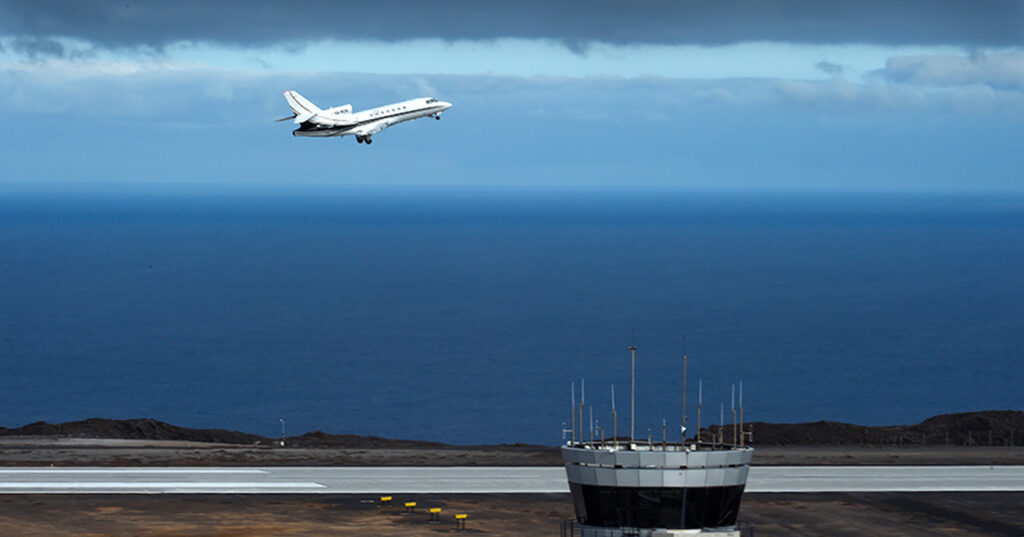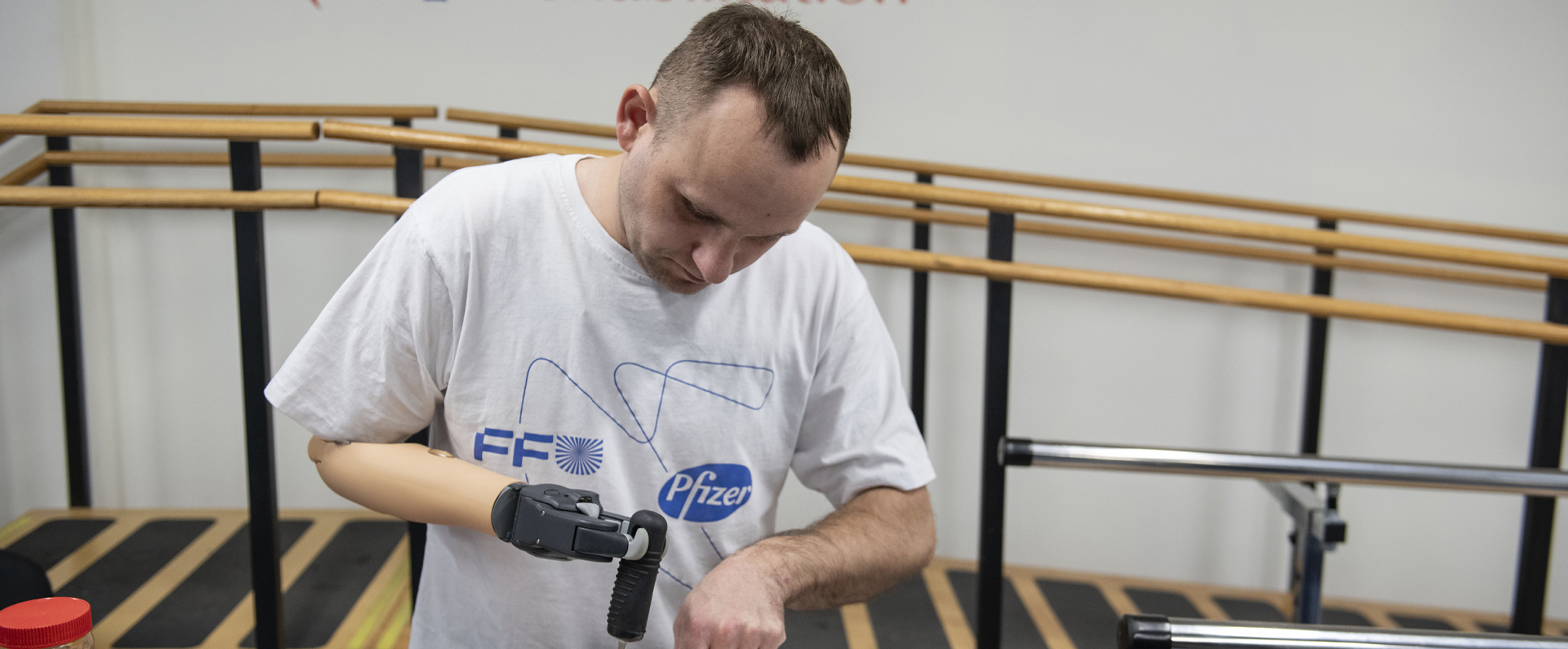
This article was first published on Conservativehome.com on 17 January 2017.
It had been more than 68 years since I last set foot on St Helena, famously the fortress home to Napoleon Bonaparte after his exile, yet I quickly learnt that some things do not change.
Its 4,500 residents are as friendly, fun-loving and relaxed as ever: strangers say a cheery “hello” in the street, drivers wave to you from the open windows of their cars, houses remain unlocked at night because the crime rate is so low and ignition keys get left for days in unlocked, parked vehicles.
St Helena, a volcanic island that first erupted out of the South Atlantic some 15 million years ago, may be one of the remotest places on earth but it is also one of the most welcoming. “Saints”, as residents are affectionately known regardless of their diverse ethnic origins, religions or creed, rarely fail to live up to their name.
Before landing at the island’s troubled and underused new airport last week, I filled in an entry form that asked for the purpose of my visit. “Curiosity” was my one-word reply.
Aged two, I had travelled to St Helena by ship with my parents in 1948, when my beloved, late father, Eric, was on the way to his first Colonial Office posting in Africa. As I grew up, my parents’ fond recollections of St Helena gave me an affinity for the island and I have long intended to return.
This time last year the entire island was riding a giant wave of expectation with the airport unveiling scheduled for the next month: February 2016. And then, with economic prosperity seemingly just around the corner, it all went horribly wrong…
As I revealed in my first blog on St Helena in June last year, the official opening of the airport was twice postponed amid major concerns over “wind shear” – dangerous and unpredictable cross-winds caused by the island’s unique topography.
Even when the airport did quietly open for business, it was considered unsafe for use by the two commercial airlines, Comair and Atlantic Star Airlines, which had planned to operate from South Africa and the UK respectively. British national newspapers revelled in highlighting the woes of a hugely expensive airport, paid for from £285 million of taxpayers’ money, where large aircraft could not land.
As I first disclosed eight months ago, the airport, though a remarkable feat of engineering, was in danger of becoming an expensive “white elephant” and a deep embarrassment to the British Government.
St Helena is 47 square miles in size, about a third the size of the Isle of Wight. A British Overseas Territory, it lies some 1,200 miles from the African mainland and 1,800 miles from Brazil. It was discovered by the Portuguese in 1502, but later run by the British East India Company which, in turn, eventually handed it over to the Crown.
St Helena has near full employment with the local Government the main employer and others working in agriculture, fishing and various small businesses. However, the average wage is only around £7,000 a year despite high costs for food and other essentials that are a result of the island’s isolation.
In modern times, the island’s lifeline to the rest of the world has been the Royal Mail Ship (RMS) St Helena, which takes five days to sail between Cape Town and St Helena, and operates on a fortnightly cycle. “The RMS”, as it is known locally, had been due to be decommissioned last year after reaching the end of its natural life but, while the airport’s future use remains uncertain, it is still in operation.
I am in the fortunate position of having use of a private jet. Eight months ago, I had hoped to become one of the very first non-test flights to land on St Helena but widespread safety concerns scuppered that plan.
However, last week I finally flew from the Namibian capital of Windhoek to St Helena, a journey of some three hours and17 minutes. With weather conditions favourable, my two pilots elected to approach the island from the south, landing on what is known as “Runway 02”: this has the advantage of encountering less wind shear problems but the disadvantage of approaching with a tail wind. Pilots, for safety and performance reasons, always prefer to land and take-off into the wind: however, the tail wind of eight knots was within the plane’s safety limit of ten knots (see an edited version of my actual landing above).
The dramatic approach to the airport provides an awesome sight: I found it exhilarating and my only fear was that a sudden deterioration in the weather might prevent us landing. However, we landed on the 1,000 foot-high runway to the south-east of the island on our initial approach and without incident.
One of my first ports of call that afternoon was Jacob’s Ladder (pictured, right) where, in 1948, my father, then recently out of the Army and blessed with both fitness and determination, carried me up its 699 steps, cut into the steep cliffside in 1829.
The next day I also visited Longwood House, where Napoleon lived in exile from 1815 until his death in 1821 (unlike me, the deposed French Emperor was never a fan of the island, once saying its only redeeming feature was its coffee).
In 1948, I had carelessly fallen into Longwood House’s fishpond only to be rapidly scooped out by my parents. Last week, I was delighted to find that, nearly seven decades on, the pond remains in place and this time I managed to negotiate my way around it rather than plunge into its waters for a second time.
My other numerous stop-offs last week included Plantation House, a 35-room Georgian mansion set in 280 acres where I was given a warm welcome, first by Lisa Phillips, the island’s first woman Governor, and then by St Helena’s most famous resident: the giant tortoise Jonathan. He is believed to have been born in around 1832 and stakes a claim to be the world’s oldest living animal. In St Helena, giant tortoises celebrate their birthday on January 1 and so Jonathan is now deemed to be 185 years old.
St Helena has any number of attractions for foreign visitors: while some are enchanted but its unique wildlife, flora and fauna, others marvel at how the vegetation can be green and lush at one moment and then semi-desert a mere two miles down the road. Yet more visitors are captivated by its numerous historical landmarks, everything from ancient churches and an impressive museum to Napoleon’s Tomb and Hill Knoll Fort, constructed in 1798 as the island’s first major fortification. However, without large, accessible beaches and devoid of a busy nightlife, St Helena is always likely to remain a niche tourist destination for the more adventurous and thoughtful traveller.
One of the primary purposes for my visit was simply to meet as many islanders as possible. I wanted to discover whether, after the airport fiasco, they despair at a missed opportunity or whether they remain hopeful that the island’s best times still lie ahead. In truth, I encountered many islanders with both views: resentment and optimism were equally apparent.
On my first full day on the island, I took an early morning stroll. Within minutes, I had met three new acquaintances, all happy to share their thoughts with me despite the fact that it was little after 7am. My chance meeting with Brian Davies, an island carpenter, was swiftly followed by introductions to Colin Yon, a builder, and Dave Marr, a plumber. All shared a common passion for their island home.
For my stay on the island, I booked into the 18th-century, 18-room Consulate Hotel, which lies in the centre of Jamestown, the island’s coastal capital and its heartbeat.
The hotel is owned and run by Hazel Wilmot, aged 60, who is believed to be the biggest individual inward investor on St Helena, having come alone to the island from Botswana in 2008. Since then, she has spent more than £2 million buying and renovating her hotel, as well as investing in a 17-acre farm to provide meat, eggs and other food for her hotel guests.
Ms Wilmot says her money was only spent with the prospect of a new airport and new prosperity for the island – but now her hotel is largely empty and last year her electricity was (temporarily) cut off because she could not afford to pay an outstanding bill. She says she and others on St Helena are on the verge of bankruptcy with homes, boats and other possessions in danger of being repossessed.
“I have been left high and dry by matters beyond my control and I feel angry and frustrated,” Ms Wilmot told me. “I am broke, with some £175,000 worth of debts.”
Today Ms Wilmot is a constant thorn in the side of both the Department for International Development (DFID) and the St Helena Government. She insists she and other islanders should receive financial compensation because their financial woes are largely the result of the airport’s failings.
At Jamestown’s dockyard, Johnny Herne, 43, born and bred on the island, is equally unhappy with DFID and the island’s Government. He says that he has borrowed £150,000 to buy a new boat, Emerald Isle, to provide trips for tourists to see the dolphins and whale sharks, and for private fishing trips.
With monthly interest repayments of £2,500, on top of monthly insurance and fuel bills each of £1,000, he says he has a daily battle to avoid bankruptcy now that visitor numbers remain so low. Official predictions were that tourist numbers would leap from around a 1,000 a year at present to 29,000 a year by 2042.
“I know I took a risk but I feel very let down. We were promised a busy airport and yet it hasn’t happened,” said Mr Herne, who added that he now has three different jobs and works up to 18 hours a day, seven days a week, to keep his head above water.
However, others investors are much more optimistic and appear confident that the airport’s problems will be solved. A January 27 deadline has been set for airlines to put in tenders to run an air service to and from the island.
Lucille Johnson, 43, and her business partner, Patrick Henry, 51, spent £15,000 on two new taxis last year with the intention of launching an airport shuttle on the island. When the passengers failed to arrive, however, they adapted their business, V2 Taxi Partners, to specialise in a 24-hour service for islanders and visitors alike. Within months, they had bought two more taxis at a further cost of £15,000 and are employing two part-time staff.
“The failure of the airport has been a disappointment but Saints feel it will be fixed. There will be uproar if it is not sorted,” said Ms Johnson, who like Mr Henry was born and brought up on the island.
One proposed solution to the wind shear issue is to blast away hundreds of tons of volcanic rock, known as King and Queen Rocks, that lie above the airport runway. However, conservative estimates say the work would cost more than £75 million and, inevitably, if the work is authorised but it fails to solve the problem, DFID will come in for further public ridicule.
A decision on which company will operate the airlines to and from St Helena is expected in May and regular services should be in operation before the end of the year. Airlines, including the British-based Atlantic Star, are convinced that the wind shear problems can be overcome using the right aircraft and routes.
One suggestion from Atlantic Star is to expand the capacity for civilians to share military flights from RAF Brize Norton, Oxfordshire, to Ascension Island – nearly 800 miles north west of St Helena. Atlantic Star Airlines would then use an Avro jet, with a maximum capacity of 60 passengers, to fly to and from St Helena and Ascension twice a week. Atlantic Star Airlines expects competition from a handful of South African and Namibian airlines for the tender.
For all the hard work and positive public comments of Niall O’Keeffe, the Chief Executive for Economic Development, and Christopher Pickard, the Director of Tourism, I have no doubt that an announcement on regular flights is needed before they can achieve their respective aims of bringing significant investment and large number of tourists to St Helena. A permanent solution, rather than a “cut and paste” one, is what islanders crave and deserve.
Basil George, aged 80, who runs a tour business with his son Kevin, one of his three children, used to teach on St Helena before becoming its Director of Education. An astute observer of island life, Mr George speaks for many Saints when he tells me: “We are at a crisis at the moment which is a good time to rethink how this island can progress.”
I was flattered that on arriving on the island I was already looked upon as a “friend of St Helena” because, despite my long absence, I have vigorously championed the island’s cause.
During my visit, I gave an interview to Tammy Williams, of Saint FM Community Radio and the St Helena Independent newspaper, that resulted in both two lengthy radio broadcasts and also front-page news. Mike Olsson, a Swede who has lived on the island more than 20 years, owns the newspaper and is a board member of the radio station. In fact, I gave a live radio interview to Mr Olsson, now a councillor, in 2009 when I “buzzed” the island in my plane as a show of support.
I have already posed tough questions relating to DFID and the St Helena Government in terms of what went wrong last year and what the future holds for islanders. They are questions that remain largely unanswered.
I am an unashamed critic of the UK’s policy that results in so much of our annual £12.4 billion foreign aid budget being squandered by corrupt and incompetent regimes.
However, while we still have a commitment to spend 0.7 percent of our Gross Domestic Product on foreign aid, I would much rather see such funds allocated to our Overseas Territories, including deserving causes such as St Helena.
During my visit, I observed a hard-working, enthusiastic, resilient community but one that needs help in improving its infrastructure and its skills if it is to welcome tourists on the ambitious scale that is planned.
Today water and fresh food are scarce, credit card payments are not accepted, the internet service is both slow and expensive and up-market hotel rooms are in short supply (even the new 32-room hotel in Main Street, due to open later this year, is not without controversy since: because it was bought and is being refurbished with £1.5 million of local government funding, private hoteliers resent the subsidised competition).
Although significant improvements have already been made in the past decade, tens of millions of pounds are needed to improve St Helena roads, health service and schools. Even its prison, currently home to 13 miscreants, needs to be brought into the 21st Century. Yet the challenge facing Saints is to modernise the island while still preserving its distinctive charm.
St Helena is run by a DFID-appointed Governor together with a 12-strong elected council and senior civil servants (together they provide the members for both the Executive and Legislative Councils).
Yet, according to senior sources, relations between DFID and the council are at “rock bottom”. Councillors feel they have been “kept in the dark” over major plans for St Helena and that too often local wishes are ignored.
“DFID does not listen to the people of this island yet we are the ones who know best what can, and cannot, be achieved,” said one senior source. “DFID imposes more and more, and listens less and less,” said a second source, adding: “We need to see more openness, transparency and accountability if we are to work successfully with DFID in future.”
The list of grievances from islanders and its council is long but near the top is what they see as dishonesty and incompetence over their airport: first insufficient weather surveys and test flights took place before the island’s runway was chosen and then, once safety concerns were identified two years ago by the Met Office, the relevant parties, including prospective airlines and investors, were not at once made aware of them.
The council and islanders also say that DFID then dithered for too long before making a commitment to continue running the RMS St Helena boat for a least a year ahead while there was no air service. With most hotel reservations made a year in advance, potential visitors had been unwilling to make a holiday booking when they could not guarantee they could get to and from the island when the time came.
At present, St Helena receives nearly £30 million a year in Government subsidies from DFID but the hope remains that, with a vibrant economy based on tourism, the island will eventually be self-sufficient within quarter of a century.
No one will be happier than me if that is achieved but I suspect the reality will be that it may take far longer for St Helena to survive without some kind of subsidy from Britain which, given the island’s remoteness and isolation, is perhaps unsurprising.
As my plane lifted off from south-facing “Runway 02”, under blue skies and into a 12-knot headwind at 3.40pm on Wednesday of last week, I took some pride from the fact that I was about to create a small piece of history on the first flight from St Helena to mainland Europe.
After a take-off that was as equally as smooth as my landing two days earlier, I glanced back at the island with nothing but fond memories of my short stay: St Helena and its warm-hearted Saints had lived up to all my expectations and more.
If ever a small community deserve a change of fortune, it is the residents of St Helena, and I will continue to play a small part in making life uncomfortable for those who let them down. One thing is certain: this time it will be closer to seven months, rather than seven decades, before I return to visit my new friends once again.



